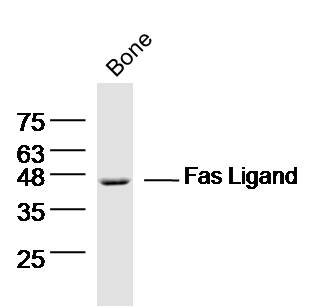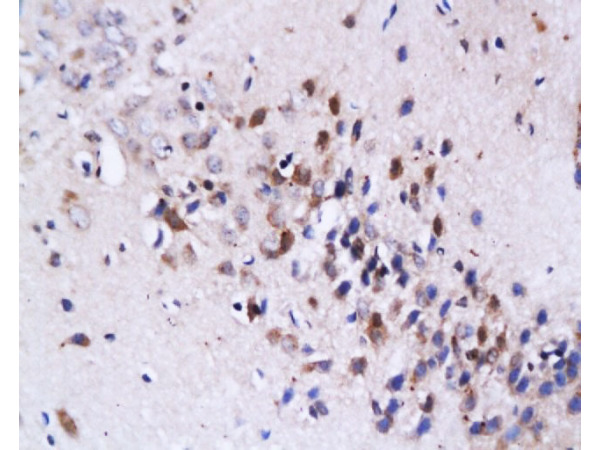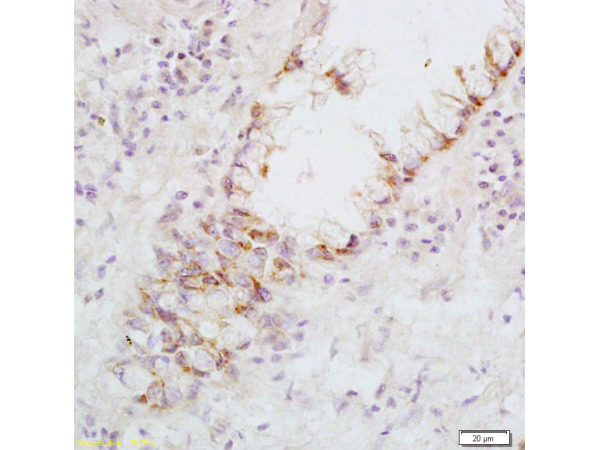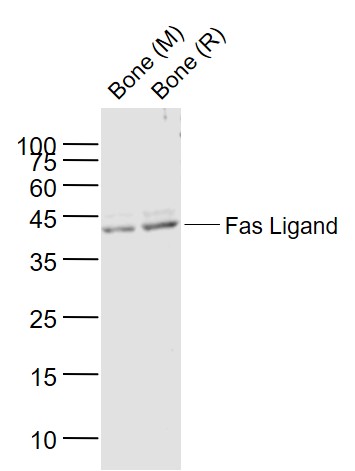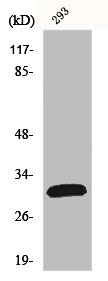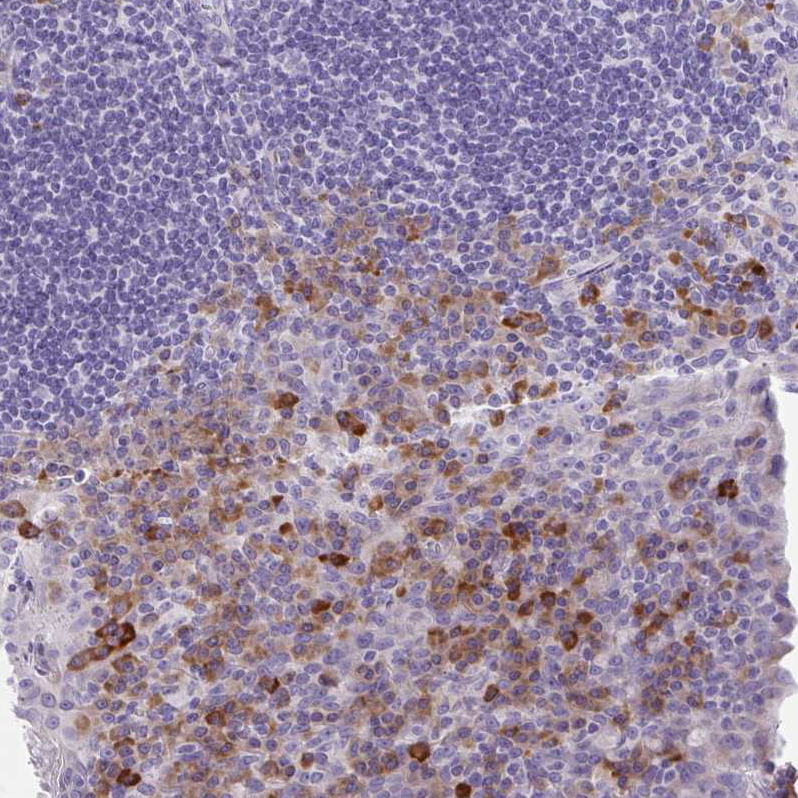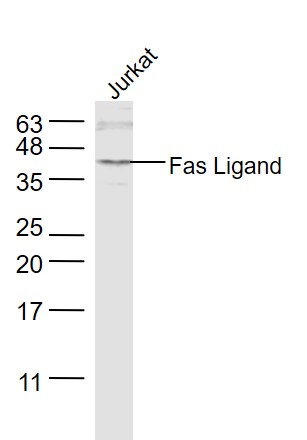
Jurkat lysates probed with Fas Ligand Polyclonal Antibody, Unconjugated (bs-0216R) at 1:1000 dilution and 4˚C overnight incubation. Followed by conjugated secondary antibody incubation at 1:10000 for 60 min at 37˚C.
Fas Ligand Polyclonal Antibody
BS-0216R
ApplicationsFlow Cytometry, ImmunoFluorescence, Western Blot, ELISA, ImmunoCytoChemistry, ImmunoHistoChemistry, ImmunoHistoChemistry Frozen, ImmunoHistoChemistry Paraffin
Product group Antibodies
TargetFASLG
Overview
- SupplierBioss
- Product NameFas Ligand Polyclonal Antibody
- Delivery Days Customer16
- ApplicationsFlow Cytometry, ImmunoFluorescence, Western Blot, ELISA, ImmunoCytoChemistry, ImmunoHistoChemistry, ImmunoHistoChemistry Frozen, ImmunoHistoChemistry Paraffin
- Applications SupplierWB(1:300-5000), ELISA(1:500-1000), FCM(1:20-100), IHC-P(1:200-400), IHC-F(1:100-500), IF(IHC-P)(1:50-200), IF(IHC-F)(1:50-200), IF(ICC)(1:50-200)
- CertificationResearch Use Only
- ClonalityPolyclonal
- Concentration1 ug/ul
- ConjugateUnconjugated
- Gene ID356
- Target nameFASLG
- Target descriptionFas ligand
- Target synonymsALPS1B, APT1LG1, APTL, CD178, CD95-L, CD95L, FASL, TNFSF6, TNLG1A, tumor necrosis factor ligand superfamily member 6, CD95 ligand, Fas ligand (TNF superfamily, member 6), apoptosis (APO-1) antigen ligand 1, apoptosis antigen ligand, fas antigen ligand, mutant tumor necrosis factor family member 6, tumor necrosis factor ligand 1A
- HostRabbit
- IsotypeIgG
- Protein IDP48023
- Protein NameTumor necrosis factor ligand superfamily member 6
- Storage Instruction-20°C
- UNSPSC12352203
References
- Jimbo H, Nagai H, Fujiwara S, et al. Fas-FasL interaction in cytotoxic T cell-mediated vitiligo: The role of lesional expression of tumor necrosis factor-α and interferon-γ in Fas-mediated melanocyte apoptosis. Exp Dermatol. 2020,29(1):61-70. doi: 10.1111/exd.14053Read this paper
- Liu S, Shen M, Li C, et al. PKCδ contributes to oxidative stress-induced apoptosis in porcine ovarian granulosa cells via activating JNK. Theriogenology. 2019,131:89-95. doi: 10.1016/j.theriogenology.2019.03.023Read this paper
- Wang Z, Liu F, Yu JJ, et al. β-Bourbonene attenuates proliferation and induces apoptosis of prostate cancer cells. Oncol Lett. 2018,16(4):4519-4525. doi: 10.3892/ol.2018.9183Read this paper
- Lv Y, Zheng J, Zhou Q, et al. Antiproliferative and Apoptosis-inducing Effect of exo-Protoporphyrin IX based Sonodynamic Therapy on Human Oral Squamous Cell Carcinoma. Sci Rep. 2017,7:40967. doi: 10.1038/srep40967Read this paper
- Peng Y, Fu ZZ, Guo CS, et al. Effects and Mechanism of Baicalin on Apoptosis of Cervical Cancer HeLa Cells I n -v itro. Iran J Pharm Res. 2015,14(1):251-61.Read this paper
- Qi S, Fu W, Wang C, et al. BPA-induced apoptosis of rat Sertoli cells through Fas/FasL and JNKs/p38 MAPK pathways. Reprod Toxicol. 2014,50:108-16. doi: 10.1016/j.reprotox.2014.10.013Read this paper
- Zhang Z, Zhang X, Sun Z, et al. Cytochrome P450 3A1 mediates 2,2',4,4'-tetrabromodiphenyl ether-induced reduction of spermatogenesis in adult rats. PLoS One. 2013,8(6):e66301. doi: 10.1371/journal.pone.0066301Read this paper
- Shi Y, Song Y, Wang Y, et al. β-Benzene hexachloride induces apoptosis of rat Sertoli cells through generation of reactive oxygen species and activation of JNKs and FasL. Environ Toxicol. 2011,26(2):124-35. doi: 10.1002/tox.20536Read this paper
- Shi Y, Song Y, Wang Y, et al. p,p'-DDE induces apoptosis of rat Sertoli cells via a FasL-dependent pathway. J Biomed Biotechnol. 2009,2009:181282. doi: 10.1155/2009/181282Read this paper

